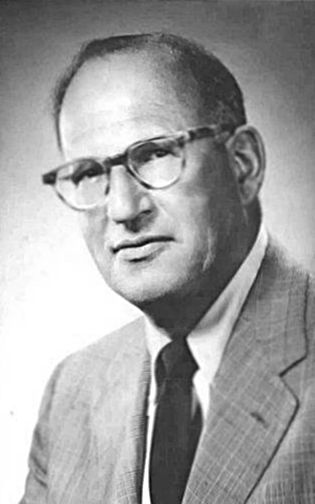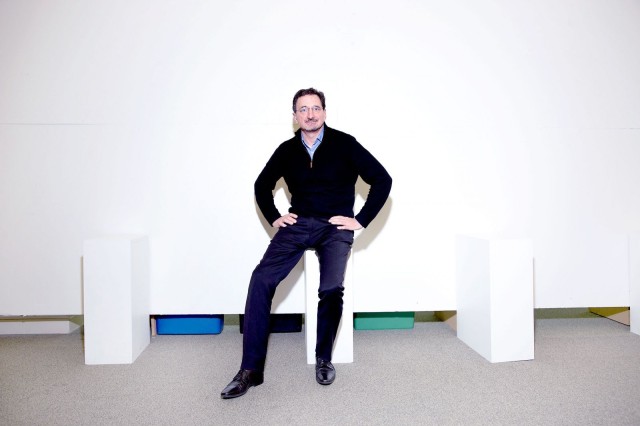With an innovative architectural style that brought elegant living to the masses, real estate developer Joseph Eichler left an indelible mark on California in the 1960s.
His beautifully simple blueprints also had an undeniable impact on Apple’s co-founders — although Steve Wozniak and Steve Jobs took very different lessons from his work. Remarkably, Eichler’s design philosophy continues to shape Apple’s products, inside and out, to this day.
“I was very lucky to grow up in an Eichler,” Wozniak told Cult of Mac, referring to his family’s four-bedroom home in Sunnyvale, California. “It greatly influenced my liking of simplicity and open style. I like it whenever I see those attributes in any architecture.”
This post contains affiliate links. Cult of Mac may earn a commission when you use our links to buy items.

Eichler’s company created more than 11,000 homes in California between the years 1950 and 1974, the year in which he died.
The Eichler homes — many of which survive in both Northern and Southern California — are characterized by their one-story, wood-and-glass modernist design.
Their open-plan layouts broke down the divide between indoor and outdoor living. Crafty design elements, such as utilizing “outdoor” materials like exposed brick inside the home and making heavy use of plate glass, further merged the houses’ interiors with their exterior surroundings.
Such architectural flourishes rarely were seen outside of high-end custom homes and plush corporate offices, but Eichler’s designs helped bring a little bit of luxury to tract homes in California suburbs.
Similarly, one of Jobs’ founding beliefs for Apple was the idea that everyone should have access to tools that were previously available only to the very rich.
Early on, this referred to personal computers, but later he would modify his philosophy to mean beautifully designed technology like iPods, iPhones and iPads.
This is essentially what Eichler wanted to do with houses.
“In a nutshell, the significance of Eichler houses is that they were homes for middle-class people designed by good architects,” says Paul Adamson, a California architect and author of Eichler: Modernism Rebuilds the American Dream. “The fact that architects were involved at all with that class of house is unusual. Outside of Eichler homes, the idea was always to build houses using as speedy and streamlined a method as possible — thereby precluding any design flourishes.”

Steve Jobs’ ‘Eichler’ error
In Walter Isaacson’s Steve Jobs biography, Jobs talked about growing up in an Eichler home on Diablo Avenue in Google’s current stomping ground of Mountain View. (The Jobs family lived there from 1959 until 1967 before moving to the more famous 2066 Crist Drive address in Los Altos, where Steve started Apple.)
“[Joseph Eichler’s] homes brought clean design and simple taste to lower-income people,” Jobs recalled. “They had awesome little features, like radiant heating in the floors. You put carpet on them, and we had nice toasty floors when we were kids.”
In an ironic twist, after Jobs’ death it was discovered that he didn’t grow up in an Eichler at all, but rather an Eichler-inspired home, using concepts borrowed from Eichler architects. Although the house was most likely the creation of two of Eichler’s original architects, Anshen and Allen, the pair also designed homes for a rival developer during this time.
Nevertheless, the countercultural vision of architecting beautiful products for the mass market stayed with Jobs for life.
The importance of how technology works
Jobs’ co-founder, Steve Wozniak, actually did live in a genuine Eichler home — although it tragically burned to the ground years later.
As an engineer more than an aesthete, Woz obsessed over the way the Eichler homes fit together from an engineering perspective — the same way he still thinks about ways to make the Apple II more efficient, almost 40 years after the computer hit the market.
“It’s strange, because it wasn’t deliberate, but my own design styles wound up in the same places,” Woz says. “I especially tried to find solutions that took fewer parts and left things openly connected. To this day, I see examples of considerable architecture by architects like Frank Gehry (who designed the Facebook HQ) and I immediately detect that they are exterior artwork, where my desire for functionality goes for the Eichler aspects of inner workability and attention to the life of the occupants.”
Although Woz has been gone from Apple for years, the idea of stripping away all the superfluous parts of a piece of technology, of blurring the line between its external appearance and how it works internally, continues through the work of Jony Ive, Apple’s senior vice president of design.
As Ive has stressed many times, design isn’t just how something looks, but how it works. Apple products don’t just look beautiful for the sake of it; their appearance is linked in every way to how the user interacts with them.
“Both Eichler homes and Apple’s products are examples of elegant problem-solving,” Eichler expert Adamson told Cult of Mac. “There’s also this idea that both products, whether that be houses or computers or smartphones, should be enjoyable to use. Apple’s machines are the anti-IBM or Microsoft in the same way that Eichler homes rejected some of the more conformity-driven architecture ideas of the 1950s.”

There is one way that Apple products have been more successful than Eichlers, however: their popularity.
Eichler might have dreamed of popularizing design for the masses, but he never managed the feat on anything close to the scale that Apple has. Thanks to Apple, even non-Apple smartphone and computer makers have raised their game to emphasize the importance of aesthetics.
“Eichler homes are not popular — and never were — with the vast majority of people,” Adamson said. “That may be starting to change, however — and companies like Apple, which democratize the idea of good design, certainly have something to do with it.”
Even half a century on, and with neither Jobs nor Woz involved with Apple, those Eichler-inspired founding tenets still play a key role at Apple.
How’s that for computer architecture?


